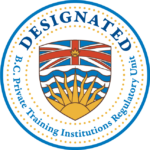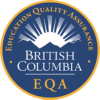GRAPHIC + DIGITAL DESIGN PROGRAM
COURSE DESCRIPTIONS
TERM 1
Adobe Photoshop
Take control of Adobe’s most powerful and popular software, Photoshop. Fundamentals covered in class include CMYK and RGB workspace, creating layers to build files, photo editing, retouching, and the basics of image resolution. Practice masking and manipulating images using the brush, clone, and stamp tools before advancing to clipping paths, interpolation, cropping, batch image techniques, and making contact sheets.
Adobe InDesign
InDesign is the industry’s publishing and typesetting software. Learn how to set up documents with single and multiple pages, master pages, and grids. Become familiar with using layers, colour swatches, character styles, and paragraph styles. This course provides an in-depth study of the rules and tools of typography through a series of exercises and projects.
Graphic Principles
This course introduces you to the design process and the fundamental principles of design, composition, and layout. Learn how to develop concepts, research, brainstorm, work through ideas, and use creative and critical thinking to develop design solutions across print and digital platforms. Project-based exercises reinforce design principles as you bring your ideas to life using the Adobe Creative Suite.
Introduction to Typography
This course teaches you all about typography and how to use it strategically within a digital design. Students will gain a foundational understanding of typography including common rules and conventions, how various typefaces tell stories, how to effectively implement them in your design strategy.
Web Design
The Internet is a brave new world and designers must understand how to bridge a client’s requirements with online infrastructure and dynamics. Learn the basics of website design, including WordPress selection and content management and FTP live launch. Build dynamic digital marketing and social media campaigns and understand which social media platforms to use and why. A solid understanding of technical and empirical online practices help designers make recommendations, perform basic hard-skill tasks, and collaborate with other professionals in these fields.
TERM 2
Adobe Illustrator
Designers use Illustrator to create and design vector artwork. Using all the tools at hand, learn how to manipulate layers, art boards, scalable graphics, paths, gradients, blends, transparencies, and produce numerous visual effects. Understand the properties and application of various file formats for print and digital publication and the production of professional artwork.
Graphic Design Studio
Above all, a working design must be functional and clear. Learn the principles of organizing typography and imagery before making and breaking complex manuscript, column, modular, and hierarchical grids. Through practical application and experimentation, this course teaches how to balance functional and abstract design.
Advertising and Marketing
Advertising and marketing strategies are only as effective as the final design. Whether you create ads for billboards, newspapers, posters, or online platforms, your job as the graphic designer is to make a product or service desirable to the general public. With the help of language and design principles, this course teaches the full process of creating an enticing marketing campaign and strategically targeting a defined audience.
Print and Digital Production
Professional designers must be able to produce and prep artwork so that it is free of problems for the printers. Learn about the various printing techniques and finishes, different substrates, and making sustainable choices in your work. Understand the importance of paper selection and of printing machines, from web and conventional sheet-fed press to digital printing and large format print. This course covers the full printing process for a wide variety of materials like paper, plastic, glass, and everything in between.
Portfolio Project
Develop your professional portfolio and networking strategies to prepare for your career after graduation. This final project is an opportunity to get first-hand experience seeking out and working with a real-world client. Partner with a small, local business and use all your acquired skills and strategies to design and launch an effective marketing campaign.



